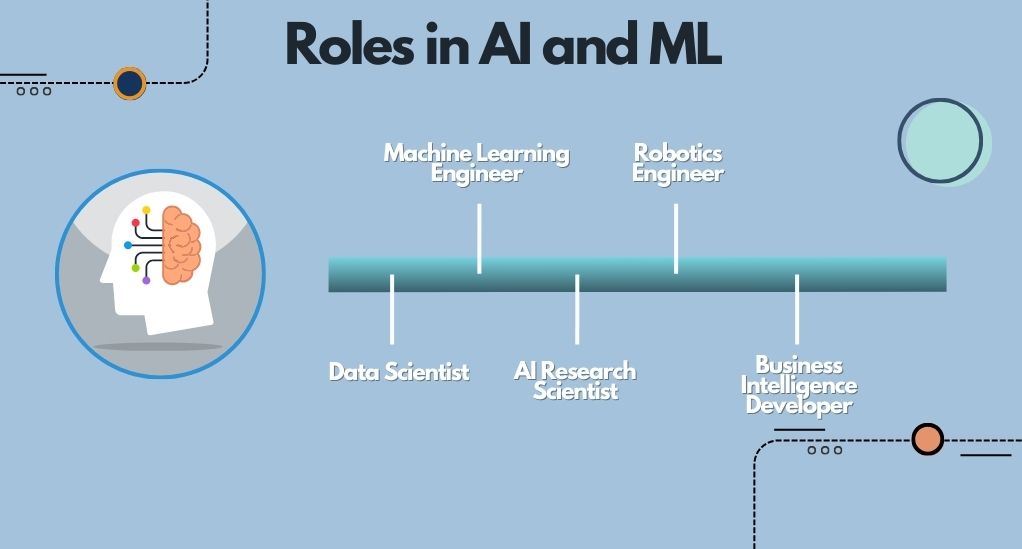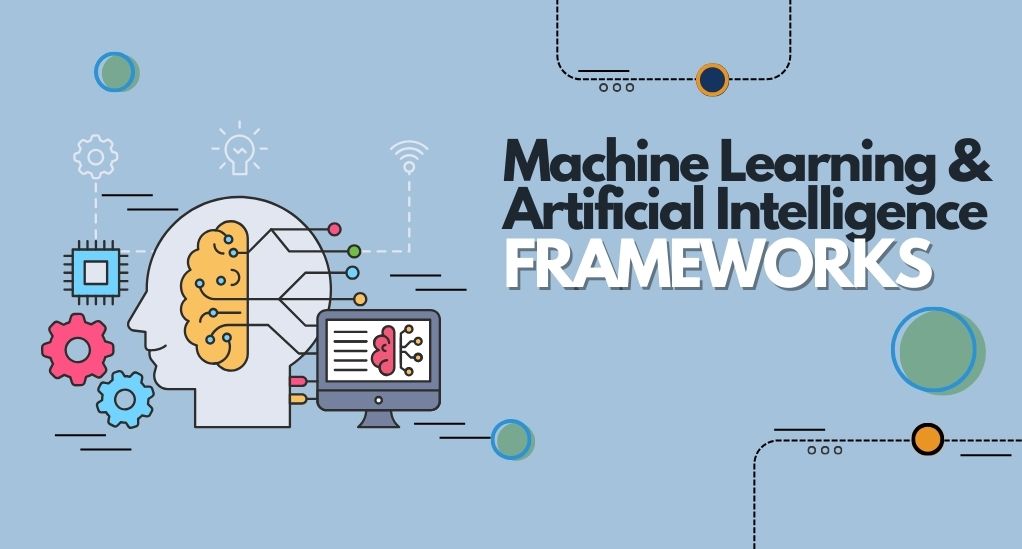
How to Build a Career in AI and Machine Learning
Artificial Intelligence (AI) and Machine Learning (ML) are two of the most transformative technologies of our time. They have revolutionized industries, from healthcare to finance, and continue to shape the way we live, work, and play. But what exactly are AI and ML, and why are they so vital in today’s digital era?
What is Artificial Intelligence?

At its core, Artificial Intelligence is the simulation of human intelligence processes by machines, especially computer systems. These processes include learning (the acquisition of information and rules for using the information), reasoning (using the rules to reach approximate or definite conclusions), and self-correction.
There are various types of AI, including:
- Narrow or Weak AI: This type of AI is designed and trained for a particular task. Virtual personal assistants, such as Apple’s Siri or Amazon’s Alexa, are forms of weak AI.
- General or Strong AI: This form of AI has generalized human cognitive abilities. When presented with an unfamiliar task, a strong AI system can find a solution without human intervention.
- Artificial Superintelligence (ASI): This is the hypothetical AI that would not just mimic or understand human intelligence and behavior; it would surpass it, potentially leading to an AI that can improve itself at an incredibly rapid pace.
Diving into Machine Learning
Machine Learning, a subset of AI, involves the use of algorithms and statistical models to allow computers to perform a task without using explicit instructions. Instead, they rely on patterns and inference. In simpler terms, it’s the science of getting computers to learn and act like humans do, improving their learning over time in an autonomous fashion by feeding them data and information.
There are three primary types of machine learning:
- Supervised Learning: The algorithm is trained on a labeled dataset, meaning the data is paired with the correct answer.
- Unsupervised Learning: The algorithm is trained on an unlabeled dataset and must find patterns and relationships within the data.
- Reinforcement Learning: The algorithm learns by performing certain actions and receiving rewards or penalties in return.
| Type of Machine Learning | Description | Example |
|---|---|---|
| Supervised Learning | Algorithm is trained on a labeled dataset. | Email spam filters |
| Unsupervised Learning | Algorithm finds patterns in unlabeled data. | Customer segmentation in marketing |
| Reinforcement Learning | Algorithm learns through trial and error. | Game playing AI |
The Importance of AI and ML in Today’s World
The significance of AI and ML cannot be overstated. They drive many of the services we use daily, from recommendation systems on streaming platforms to fraud detection in banking. Their potential to improve efficiency, reduce errors, and uncover insights from vast amounts of data is unparalleled.
Moreover, as the world becomes more data-driven, the demand for AI and ML expertise is skyrocketing. Industries are seeking professionals who can harness the power of these technologies to drive innovation and growth.
AI and ML are not just buzzwords; they are foundational technologies shaping the future. As we stand on the cusp of the Fourth Industrial Revolution, understanding and leveraging these tools will be crucial for anyone looking to make a mark in the modern world.
Understanding the AI Career Landscape

The realm of Artificial Intelligence and Machine Learning is vast and ever-evolving. With the rapid advancements in technology, the career opportunities in this domain have expanded exponentially. Let’s delve into the various roles available and the growth trajectory of the AI industry.
Different Roles in AI and ML
The AI and ML industry offers a plethora of roles tailored to different skill sets and interests. Some of the prominent positions include:
- Data Scientist: These professionals analyze and interpret complex data structures to inform business decision-making. They use statistical methods, machine learning, and predictive modeling to uncover insights and trends.
- Machine Learning Engineer: They design, implement, and deploy machine learning applications. Their role often overlaps with data scientists, but they focus more on programming and software development.
- AI Research Scientist: These individuals delve deep into the theoretical aspects of AI and ML. They work on developing new algorithms and techniques that push the boundaries of what machines can do.
- Robotics Engineer: They design and develop machines that can perform tasks without human intervention. This includes everything from self-driving cars to robots used in manufacturing.
- Business Intelligence Developer: Their primary role is to analyze data to inform business strategies. They use various analytics and visualization tools to present data insights.
The Growth Trajectory of the AI Industry
The AI industry has witnessed unprecedented growth in the last decade. According to a report by McKinsey, AI could potentially deliver an additional $13 trillion to the global economy by 2030. This growth is driven by several factors:
- Increased Data Availability: The digital revolution has led to an explosion in data generation, providing ample fodder for AI and ML algorithms.
- Advancements in Computing Power: Modern GPUs and cloud computing have made it feasible to process vast amounts of data quickly, accelerating AI research and application.
- Investment in Research: Both private and public sectors are heavily investing in AI research, leading to rapid advancements in the field.
- Demand Across Industries: From healthcare to finance, industries are recognizing the potential of AI to drive efficiency, innovation, and growth.
The combination of these factors has led to a surge in demand for AI professionals. As industries continue to integrate AI into their operations, the need for skilled individuals in this domain will only grow.
In essence, the AI and ML landscape is ripe with opportunities. Whether you’re a budding programmer, a seasoned researcher, or someone with a keen interest in the domain, there’s a place for you in this exciting world. The key is to identify your niche, continuously upskill, and stay abreast of the latest developments.
Networking and Mentorship in AI
Navigating the vast world of Artificial Intelligence and Machine Learning can be daunting. However, with the right network and guidance, the journey becomes more manageable and rewarding. Let’s explore the significance of networking and mentorship in the AI domain.
The Power of Networking
Building a robust professional network is invaluable in any field, and AI is no exception. Here’s why networking is crucial:
- Knowledge Exchange: AI is a rapidly evolving field. By connecting with peers and experts, you gain insights into the latest trends, tools, and best practices.
- Collaboration Opportunities: Networking can lead to collaborative projects, allowing you to work with diverse teams and tackle real-world challenges.
- Job Opportunities: Many job openings in the tech industry are filled through referrals. A strong network can open doors to opportunities that might not be publicly advertised.
- Community Engagement: Being part of AI communities, such as forums, workshops, and conferences, can provide a platform to showcase your work, get feedback, and learn from others.
Mentorship: A Guiding Light
Having a mentor in the AI field can be a game-changer for several reasons:
- Personalized Guidance: A mentor can provide tailored advice based on their experiences, helping you avoid common pitfalls and make informed decisions.
- Skill Development: Mentors can identify gaps in your knowledge and recommend resources, courses, or projects to enhance your skills.
- Career Navigation: Whether you’re looking to switch roles, get a promotion, or start your own AI venture, a mentor can offer insights and connections to help you achieve your goals.
- Boosting Confidence: The AI domain can be overwhelming. Having someone to reassure you, provide feedback, and celebrate your achievements can boost your confidence and drive.
To find a mentor, consider reaching out to professionals you admire, either through social platforms like LinkedIn or at AI conferences and workshops. Remember, mentorship is a two-way street. While you gain insights and guidance, ensure you also bring value to the relationship, be it through hard work, fresh perspectives, or gratitude.
Engaging with the AI Community
Beyond one-on-one mentorship, engaging with the broader AI community can be immensely beneficial. Consider joining AI organizations, attending conferences, participating in webinars, and contributing to open-source projects. These platforms not only enhance your knowledge but also position you as an active member of the AI ecosystem.
While technical skills and knowledge are vital in AI, the relationships you build along the way play a pivotal role in shaping your career. By actively networking and seeking mentorship, you set the stage for continuous learning, collaboration, and growth in the dynamic world of AI and Machine Learning.
Gaining Practical Experience
While theoretical knowledge provides a foundation, practical experience is the cornerstone of a successful career in AI and Machine Learning. Immersing oneself in real-world projects and challenges not only solidifies understanding but also showcases one’s skills to potential employers and collaborators.
The Significance of Hands-on Learning
- Application of Theory: Engaging in practical projects allows you to apply theoretical concepts in real-world scenarios, deepening your understanding and refining your skills.
- Problem-Solving: Real-world challenges often come with unforeseen issues. Tackling these problems head-on enhances your problem-solving abilities and adaptability.
- Portfolio Building: Every project you undertake can be added to your portfolio, showcasing your skills, achievements, and areas of expertise to potential employers or clients.
Ways to Gain Practical Experience
- Personal Projects: Start with a problem you’re passionate about or curious to solve. It could be anything from building a recommendation system for a personal blog to creating a machine learning model that predicts weather patterns. Document your process, challenges faced, and solutions implemented.
- Online Competitions: Platforms like Kaggle offer a plethora of data science and machine learning competitions. Participating in these not only exposes you to real-world challenges but also allows you to learn from the solutions of other participants.
- Internships and Fellowships: Many organizations offer internships or fellowships in AI and ML. These provide a structured environment to learn, work on live projects, and receive mentorship from industry experts.
- Collaborative Research: Consider collaborating with researchers or joining research groups in academia or industry. Working on cutting-edge problems can lead to publications, patents, and a deeper understanding of advanced AI concepts.
- Open Source Contributions: Many AI and ML tools are open source. Contributing to these projects can help you understand the intricacies of the tools you use and establish your reputation in the community.
Developing Essential Soft Skills
While technical prowess is undeniably crucial in the realm of AI and Machine Learning, soft skills play an equally significant role in ensuring success. These skills, often overlooked, can make the difference between a good AI professional and a great one.
Communication Skills
- Bridging the Gap: AI professionals often work with stakeholders from diverse backgrounds. Being able to explain complex AI concepts in layman’s terms ensures everyone is on the same page, fostering collaboration and understanding.
- Presenting Findings: Whether it’s sharing results with a team, presenting at a conference, or writing a research paper, effective communication ensures your work gets the recognition and understanding it deserves.
Teamwork and Collaboration
- Diverse Teams: AI projects often involve cross-functional teams comprising data engineers, business analysts, UX designers, and more. Being a team player ensures seamless integration and project success.
- Feedback Reception: Being open to feedback and suggestions from team members can lead to improved models and solutions. It’s essential to remember that everyone brings a unique perspective to the table.
Critical Thinking and Problem Solving
- Analyzing Solutions: In AI, there’s often more than one way to solve a problem. Critical thinking enables you to evaluate different solutions and choose the most effective one.
- Adapting to Challenges: AI projects can be riddled with unforeseen challenges. A problem-solving mindset helps navigate these hurdles and find innovative solutions.
Ethical Considerations
- Responsible AI: As AI systems increasingly influence our lives, it’s crucial to develop them responsibly. Understanding the ethical implications and biases of your models ensures they benefit society as a whole.
- Transparency and Accountability: Ensuring your AI solutions are transparent and explainable builds trust with users and stakeholders.
Continuous Learning and Adaptability
- Staying Updated: The AI field is ever-evolving. A commitment to continuous learning ensures you stay updated with the latest advancements and best practices.
- Flexibility: AI projects can change direction based on new data, stakeholder feedback, or technological advancements. Being adaptable ensures you can pivot and adjust as needed.
Emotional Intelligence
- Understanding Stakeholder Needs: Being attuned to the needs and concerns of stakeholders, whether they’re clients, users, or team members, ensures your AI solutions are user-centric.
- Self-awareness and Resilience: AI projects can be challenging and, at times, frustrating. Being aware of your emotions and reactions, and having the resilience to bounce back from setbacks, is crucial.
Defining Your Purpose in AI
In the vast and intricate landscape of Artificial Intelligence and Machine Learning, it’s easy to get lost in the technicalities and lose sight of the bigger picture. However, the most impactful professionals in the field are often those driven by a clear purpose and passion. Let’s delve into the importance of having a defined ‘why’ in your AI journey.
The Role of Passion
- Driving Force: Passion acts as a fuel, propelling you through challenges, late nights, and complex problems. When the going gets tough, remembering why you started can be the motivation you need to push through.
- Quality of Work: When you’re genuinely passionate about a project or a problem, the quality of your work often reflects that. You’re more likely to go the extra mile, think outside the box, and produce exceptional results.
Finding Your Niche
The AI domain is vast, encompassing everything from natural language processing and computer vision to robotics and predictive analytics. Finding a niche or specialization that resonates with your interests can make your work more fulfilling.
- Research and Exploration: Spend time reading about different AI applications, attending workshops, and experimenting with various projects. This exploration can help you discover areas you’re genuinely passionate about.
- Aligning with Personal Values: Perhaps you’re passionate about healthcare and want to leverage AI to improve patient outcomes. Or maybe you’re concerned about climate change and see AI’s potential in sustainability. Aligning your AI pursuits with your personal values can make your work more meaningful.
Impact Beyond Technology
- Societal Benefits: AI has the potential to address some of the world’s most pressing challenges, from healthcare and education to poverty and conservation. By focusing on projects with societal benefits, you can ensure your work has a lasting impact.
- Ethical Considerations: With great power comes great responsibility. As AI systems become more integrated into our lives, it’s crucial to develop them with ethics and fairness in mind. Defining your purpose can include a commitment to responsible and ethical AI development.
Tools and Frameworks in AI and ML

The technical backbone of any AI and Machine Learning professional lies in the tools and frameworks they employ. These software libraries and platforms enable the development, training, and deployment of AI models. Familiarity with the right tools can significantly enhance efficiency and open doors to advanced functionalities.
Popular Programming Languages
- Python: Widely regarded as the go-to language for AI and ML, Python boasts a rich ecosystem of libraries and frameworks. Its simplicity and readability make it a favorite among beginners and experts alike.
- R: Especially popular in statistical modeling and data analysis, R offers a comprehensive suite of packages for data manipulation and visualization.
- C++: While not as commonly used as Python for high-level ML tasks, C++ offers performance advantages and is often employed in robotics and computer vision applications.
Essential Frameworks and Libraries
- TensorFlow: Developed by Google, TensorFlow is an open-source framework that facilitates building and training ML models. Its flexibility and scalability make it suitable for both research and production.
- PyTorch: Developed by Facebook’s AI Research lab, PyTorch is known for its dynamic computational graph, making it particularly useful for deep learning research.
- Scikit-learn: A Python library that provides simple and efficient tools for data analysis and modeling. It’s particularly popular for traditional machine learning algorithms.
- Keras: An interface for developing deep learning models. It can run on top of TensorFlow, Theano, or Microsoft Cognitive Toolkit and simplifies the process of building neural networks.
- OpenCV: A library focused on real-time computer vision. It’s widely used in image and video processing tasks.
Cloud Platforms for AI
- Google Cloud ML Engine: Offers tools for building, training, and deploying machine learning models in the cloud.
- AWS SageMaker: Amazon’s fully managed service that allows for easy building, training, and deploying of ML models at scale.
- Microsoft Azure Machine Learning: Provides a suite of tools and services for building, training, and deploying ML models in the Azure cloud environment.
The AI and ML field is characterized by rapid advancements. New tools, libraries, and best practices emerge regularly.
- Online Communities: Platforms like Stack Overflow, GitHub, and Reddit have active AI and ML communities where professionals discuss the latest tools and share insights.
- Workshops and Conferences: Events like NeurIPS, ICML, and TensorFlow Dev Summit are excellent places to learn about the latest advancements in tools and frameworks.
- Online Courses: Platforms like Coursera, Udemy, and edX offer courses on the latest tools and technologies in AI and ML.
Tips for Aspiring AI Entrepreneurs
The surge in AI and Machine Learning technologies has not only transformed industries but also opened doors for entrepreneurial ventures. For those looking to merge their passion for AI with the spirit of entrepreneurship, the opportunities are vast. Here’s a guide to help aspiring AI entrepreneurs navigate this exciting journey.
Identifying Market Needs
- Research and Analysis: Before diving into a venture, conduct thorough market research. Identify gaps in the market where AI can offer innovative solutions.
- User-Centric Solutions: Ensure that your AI solution addresses genuine user pain points. Engage with potential users, gather feedback, and iterate on your solution.
Building a Diverse Team
- Multidisciplinary Approach: AI ventures often require expertise beyond just AI and ML. Consider building a team that includes data scientists, software developers, domain experts, and business strategists.
- Culture of Innovation: Foster a work environment that encourages experimentation, learning, and innovation.
Securing Funding
- Bootstrapping: Initially, consider self-funding or bootstrapping your venture. This allows you to retain control and refine your product without external pressures.
- Venture Capital: As your venture grows, consider approaching venture capitalists who specialize in AI startups. They can provide not only funding but also valuable industry connections and mentorship.
- Grants and Competitions: Many organizations offer grants for innovative AI solutions. Participating in startup competitions can also provide funding and exposure.
Navigating Regulatory Challenges
- Stay Informed: AI, especially in sectors like healthcare or finance, can be subject to regulations. Ensure you’re aware of any industry-specific regulations and comply with them.
- Ethical Considerations: Beyond just regulatory compliance, ensure your AI solutions are ethical, transparent, and free from biases.
Scalability and Deployment
- Cloud Solutions: Utilize cloud platforms for deploying AI solutions. They offer scalability, ensuring your solution can handle increased user loads as your venture grows.
- Continuous Improvement: AI models can become outdated. Ensure a system of continuous feedback and improvement to keep your solutions relevant and effective.
Building Partnerships
- Collaborations: Partner with other companies or research institutions. Collaborations can offer complementary skills, resources, and market access.
- Industry Engagement: Engage with industry bodies, attend conferences, and participate in workshops. These platforms offer networking opportunities and insights into the latest industry trends.
Educating Your Market
- Awareness Campaigns: The AI domain can be complex for the average user. Consider running awareness campaigns to educate potential users about the benefits and workings of your solution.
- Transparent Communication: Ensure clear communication about how your AI solution works, its benefits, and any potential risks.
Conclusion
In the ever-evolving landscape of Artificial Intelligence and Machine Learning, we stand at a pivotal juncture where technology and humanity intersect. As we harness the immense potential of AI, it’s imperative to approach it not merely as a tool but as a partner, one that complements human ingenuity, creativity, and ethical values. The journey ahead promises unparalleled innovations and challenges. Embracing AI responsibly, ethically, and collaboratively ensures that we not only advance technologically but also elevate our collective human experience, crafting a future where technology and humanity thrive in harmony.


Leave a Reply